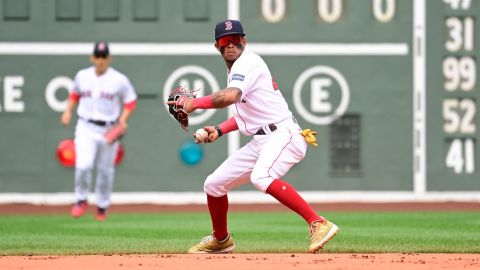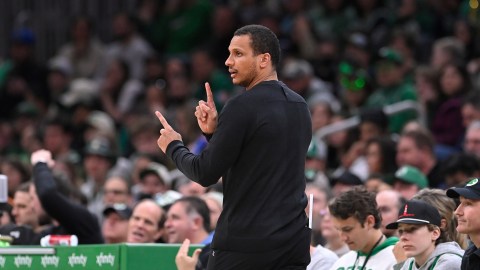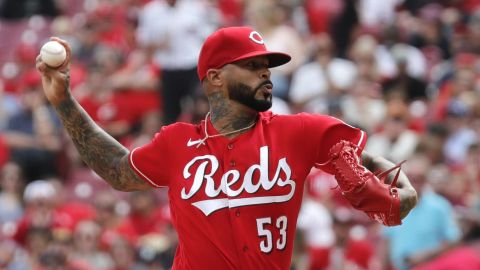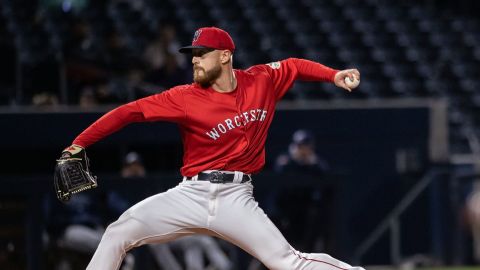The bad news is David Price has been one of Major League Baseball’s most ineffective pitchers so far this season.
The good news, in theory, is that he now has an idea how he’s going to go about fixing his issues.
Price took another beating Saturday, allowing six runs in 4 2/3 innings against the New York Yankees and pushing his ERA to 6.75, the worst ERA in all of baseball among qualified starting pitchers.
Concern about Price was downplayed, to an extent, after his few starts. April struggles are nothing new for Price, who now has a 4.08 career ERA in April, easily the highest of any month for the All-Star left-hander.
The problem, of course, is Price’s early-season issues in 2016 have coincided with a noticeable dip in fastball velocity. Normally one of the hardest-throwing left-handed starters in baseball, Price has struggled to reach the mid-90s with his fastball, instead living around 91 or 92 mph. Compare Price’s average fastball this season to past seasons and it tells a potentially alarming tale.
 The first thing anyone thinks when they see that sort of drop-off, especially for a 30-year-old pitcher who’s still in his prime, is whether he’s injured. But both Price and Red Sox manager John Farrell insisted after Saturday’s game that Price isn’t hurt.
The first thing anyone thinks when they see that sort of drop-off, especially for a 30-year-old pitcher who’s still in his prime, is whether he’s injured. But both Price and Red Sox manager John Farrell insisted after Saturday’s game that Price isn’t hurt.
Assuming that’s actually the case and the team isn’t hiding any injury — given their investment, it would make no sense to send him out there if he was dealing with even the slightest issue — then what’s the next issue Price could be dealing with? Mechanics.
Price spoke to reporters Sunday before Boston’s win in the series finale, and revealed he got some pitching help from an unlikely source. According to the pitcher, Red Sox second baseman Dustin Pedroia noticed something about Price’s delivery while watching video. The issue centered around Price’s hand and his leg lift.
“Whenever I talk to other pitchers or at baseball camps, it’s something that I always say. I want my hands and my right leg or my right knee to be connected by a string,” Price told reporters, per MLB.com. “Whenever my knee goes up, I want my hands to go up. Whenever my knee goes back down, I want my hands to go back down.
“My hands have stayed (in one place), and that’s not allowing me to get my full leg lift. It’s been about a half of a leg lift of what I’m used to and it takes away, you know, the rhythm of what I do out there on the mound. And whenever my hands stay here, I have to be able to time it up perfect for me to be able to execute that pitch. It gives me no margin of error, because I don’t have that rhythm.”
Look at the screen shot comparison below. On the left is a still from Price’s start Saturday in the Bronx. On the right is a still from a start last May in Oakland when Price was with the Detroit Tigers.
 On the left, you can see Price’s knee doesn’t get as high and doesn’t really approach that line drawn through Price’s waist. On the right, the knee comes up a few inches higher — a huge difference when you’re talking about something so intricate.
On the left, you can see Price’s knee doesn’t get as high and doesn’t really approach that line drawn through Price’s waist. On the right, the knee comes up a few inches higher — a huge difference when you’re talking about something so intricate.
Ideally, this leg lift is what Price is looking for:

Like Price said, it’s all about rhythm, and the smallest tweak could make the difference.
Will lifting his knee a little higher add 3 mph to Price’s fastball? Maybe. Maybe not. But it is something to build on, which Price undoubtedly will take at this point. Here’s the other thing: If making this adjustment makes Price’s entire arsenal better, it’s going to help his fastball velocity in more ways than one.
An improved arsenal as a result of improved mechanics should result in fewer base runners. For his career, 61 percent of Price’s work has come with no one on base. This season, that number is all the way down to 52 percent, meaning he’s working out of the stretch more, another potential factor for decreased velocity averages. Opposing offenses have made him pay, too, with a .924 OPS against Price with runners on, a nearly 300-point increase from when the bases are empty. It’s all related.
The issue, though, is these adjustments better work. Price’s next scheduled start is Thursday against the Houston Astros. If Price’s velocity doesn’t see a bump and he gets roughed up again, there will be even more questions for the man who’s reportedly making in the neighborhood of $1 million per start.
Thumbnail photo via Noah K. Murray/USA TODAY Sports Images




